Choosing between SysAid vs. Zendesk for your IT Service Management (ITSM) needs? With many ITSM solutions available, making the right decision for your organization can be daunting.
In this blog post, we'll guide you through an in-depth ITSM tools comparison of these two leading contenders in the ITSM landscape.
But if you find neither of these platforms fully meets your unique needs, we'll introduce you to an alternative solution that may be the perfect match: InvGate Service Management. This robust service desk software is designed to offer a compelling set of features to streamline your service delivery and empower your organization.
Keep reading to discover the ideal fit for your IT Service Management needs!

Table of contents
- TL;DR
- What is SysAid?
- What is Zendesk?
- Considering InvGate Service Management as an ITSM solution alternative
TL;DR
- SysAid is a cloud-based ITSM platform that caters to mid-sized teams and well-established IT departments. It is praised for its knowledge base organization, global customer support, and customization options. Users have also manifested that the user interface can be outdated and inconsistent, the support response can be slow and the system change can be challenging, and that prices can be unreasonably high.
- Zendesk for Service is a comprehensive solution tailored to meet the needs of IT Service Management in businesses. It offers an extensive range of features, seamless multichannel support, and comprehensive reporting and analytics. However, it has also shown integration and compatibility considerations and pricing challenges across business sizes.
- InvGate Service Management, in contrast, prioritizes robust ticketing, a user-friendly interface, and seamless ITSM-to-ESM capabilities, emphasizing ease of configuration and cost-effectiveness.
We tried to be as thorough as possible, but if you don't have enough time to read it through and through, here's (another) TL;DR: InvGate Service Management can do everything we say here, and you can test it right away for free for 30 days.
Most looked-at features by buyers
When evaluating IT Service Management solutions, buyers tend to focus on specific features that meet their organization's needs. These sought-after features are critical to making an informed decision.
Let's take a closer look at the fundamental attributes that potential buyers often emphasize when comparing different ITSM tools.
- Scalability - Organizations undergoing growth and evolving needs prioritize solutions that can easily adapt to their expansion and allow customization. It is imperative for the solution to offer the ability to create custom fields, workflows, and extensions/plugins, enabling them to tailor the solution to match their distinct business requirements.
- User-friendly interface and experience - Prospective buyers take into account the platform's user experience and interface, emphasizing its user-friendliness and its ability to enhance user adoption and productivity. They value an intuitive interface that promotes efficient interaction with the software. Additionally, for organizations with remote or mobile workforces, mobile accessibility is a crucial factor to consider.
- Customization and flexibility - Buyers value software solutions that provide customization options, enabling them to adapt the platform to their unique business needs. This flexibility ensures the software aligns with their distinct workflows and processes, ultimately enhancing user satisfaction and overall effectiveness.
- ITIL compliance - Many organizations adhere to ITIL best practices for IT Service Management. Buyers may favor solutions supporting ITIL processes, such as Incident Management, Problem Management, Change Management, and Asset Management, as these processes align with organizational standards.
- Ticket Management System - Buyers assign significant importance to having a robust Ticket Management System in their help desk software. This feature facilitates effective tracking, assignment, and resolution of customer inquiries and support requests.
- Self-service portal and knowledge base - Buyers highly appreciate the inclusion of a self-service portal, as it empowers end-users to independently resolve common issues and access relevant information without requiring direct assistance.
- Streamlined IT service catalog - Organizations often require a service catalog that enables users to request specific IT services or resources. This feature simplifies service requests, provides visibility into available services, and facilitates effective service delivery management.
- Support automation and Workflow Management - Buyers actively seek software solutions that offer automation capabilities to streamline routine tasks such as ticket routing, approvals, and escalations. These automation features contribute to increased efficiency and productivity.
- Seamless integration capabilities - Integration with other systems and applications is a critical requirement for buyers, as it ensures the smooth flow of data and process automation.
Integrating existing tools and platforms is highly prized for improved efficiency and a unified user experience. - Efficient Asset Management - Users prioritize software that offers robust IT Asset Management capabilities to help them maintain accurate inventories and optimize resource utilization within their organizations.
- Comprehensive reporting - Buyers seek help desk software equipped with robust reporting tools, such as dashboards and reports, which provide valuable insights into their IT operations and performance. This data-driven approach facilitates informed decision-making and continuous service improvement.
- Pricing and support - Buyers evaluate the solution's cost-effectiveness, considering licensing models, subscription plans, and any additional costs associated with features or users. The availability of customer support, documentation, and training resources also significantly influences their decision-making process.
What is SysAid?
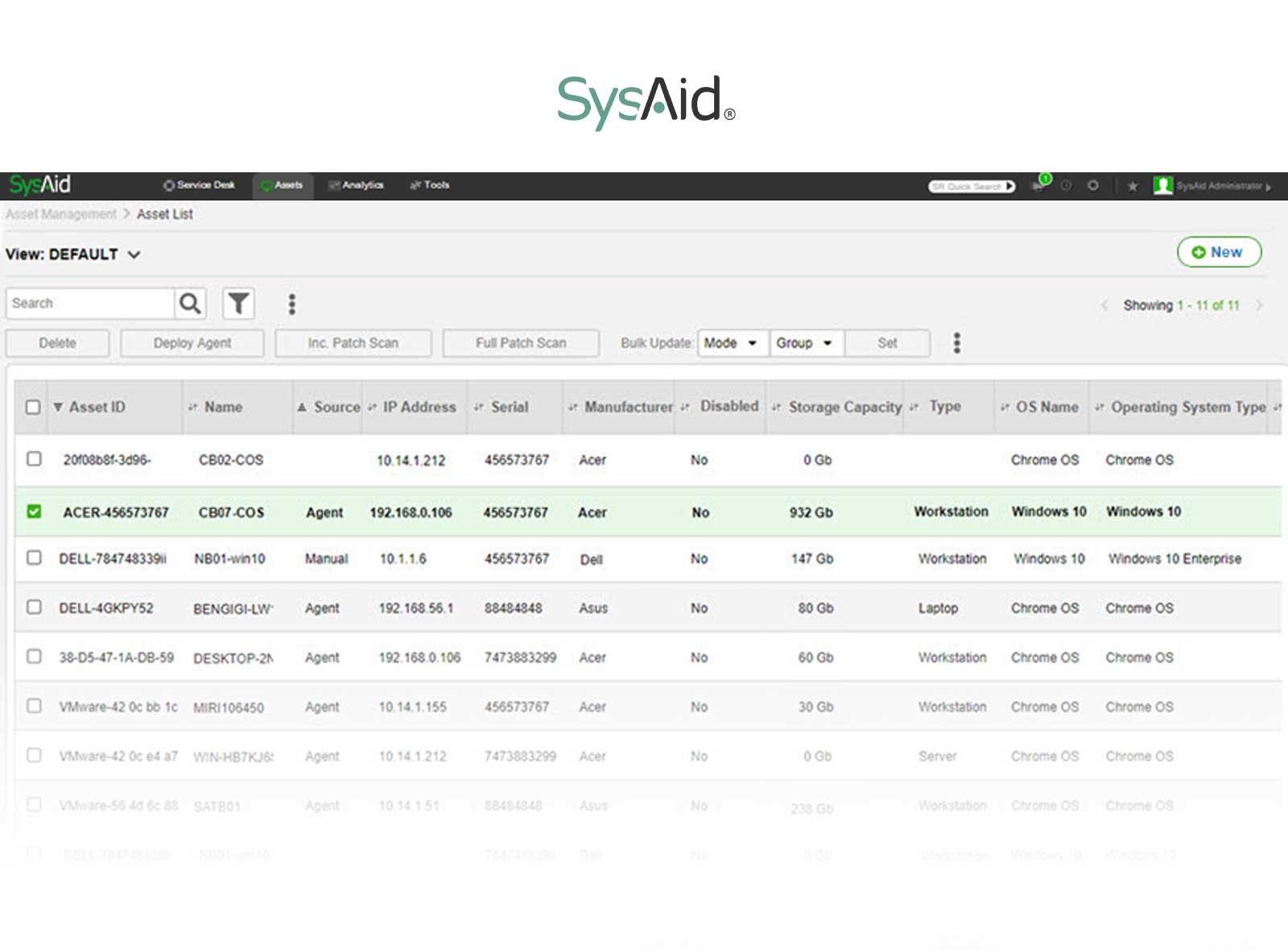
SysAid IT Service Management is a cloud-based solution created by SysAid Technologies Ltd. It empowers mid-sized teams and well-established IT departments by giving them greater control and capabilities when managing their service desk operations. This platform strongly emphasizes automation, improving the user experience, and offering comprehensive functionality. These features enable IT experts to simplify their workflows, boost efficiency, and prioritize critical tasks, ultimately contributing to the business's success.
SysAid Technologies Ltd. is based in Toronto, Canada, and was established in 2002 as an IT Service Management company. With a team of over 100 professionals, they specialize in providing effective solutions for IT incident management, problem-solving, Change Management, and service requests, helping organizations optimize their IT operations.
What users like from SysAid
SysAid has received positive reviews from Gartner. Here are some of the benefits it offers.
- User-friendly interface - The tool offers an intuitive interface that is easy to navigate, ensuring users can quickly and effortlessly utilize the software's full capabilities.
- Extensive customization - Users highly appreciate SysAid's broad customization options, allowing them to tailor the software to their specific needs and preferences. This includes adding knowledge base articles and improving knowledge sharing within the organization.
- Robust reporting features - The platform includes powerful reporting capabilities that provide comprehensive insights into ticket performance. This empowers users to make informed decisions and optimize their service desk operations based on data.
- Well-structured knowledge base - The knowledge base is meticulously organized, facilitating better information management and easy accessibility.
- Global customer support - The platform offers worldwide support and live chat options, ensuring users receive prompt assistance whenever needed.
- Effortless email integration - SysAid's email integration seamlessly facilitates effective communication with end users. This promotes collaboration and efficient issue resolution.
- Single Sign-On (SSO) and Active Directory (AD) integration - With SSO and AD integration, SysAid simplifies user authentication and access management, enhancing security and user convenience.
What users don’t like from SysAid
Despite its strengths, SysAid IT Service Management has faced customer criticism, which has been documented in sources like Gartner. Let's examine some of the highlighted concerns.
- Challenges with ticket updates and landing page customization - Users have encountered difficulties when updating tickets, causing inefficiencies in their workflows. Similarly, customizing the landing/login page has been challenging, impeding efforts to achieve desired branding and personalization.
- Outdated and inconsistent user interface - The user interface has received criticism for being outdated and inconsistent. It exhibits varying styles within the same product, undermining the user experience and complicating ease of use.
- Integration limitations and lack of AI and automation - Users have found SysAid's integration capabilities to be limited, hindering seamless integration with other systems. Furthermore, the absence of advanced AI capabilities and automation features has limited efficiency and productivity improvements.
- Restricted customization in specific areas - Some users feel constrained by the limited customization options available in certain parts of the software. This limitation hampers their ability to tailor SysAid to their specific requirements and preferences.
- Pricing and feature reliability - Some users have expressed dissatisfaction with the pricing, finding it unreasonably high. Additionally, they have encountered features that do not perform as expected, causing frustration and concerns about reliability.
- Slow support response and challenging system changes - Users have reported slow response times from the support team, leading to delays in issue resolution. Additionally, system changes have been described as frustrating and cumbersome, resulting in a negative user experience.
- Limitations on administrators and reporting - The software limits the number of administrators allowed, which can be limiting for organizations with larger teams. Moreover, the lack of comprehensive reporting options hinders users' ability to gather and analyze data effectively.
- Incomplete features - Certain features, such as the Configuration Management Database (CMDB) and license tracking, have been reported as incomplete or not fully functional. This has failed to meet user expectations and impeded optimal IT management practices.
- Difficulty in modifying settings without disrupting configurations - Users have found it challenging to modify settings without unintentionally disrupting other configurations, leading to disruptions and complexities in the system setup and administration process.
What’s SysAid’s argument over Zendesk?
SysAid makes a compelling case for why it stands out compared to Zendesk in several key aspects.
- User-friendly interface - SysAid offers an exceptionally user-friendly interface that is intuitive and easy to navigate. This ensures that users can swiftly and effortlessly harness the software's full capabilities.
- Extensive customization - SysAid offers extensive customization options that users highly appreciate. These options empower users to tailor the software to meet their needs and preferences.
- Robust reporting features - SysAid provides robust reporting capabilities, offering comprehensive insights into ticket performance. This data-driven approach allows users to make informed decisions and effectively optimize their service desk operations.
- Well-structured knowledge base - SysAid takes pride in its meticulously organized knowledge base. This meticulous organization facilitates superior information management and easy accessibility.
- Global customer support - SysAid offers worldwide support and live chat options, ensuring that users receive prompt assistance whenever needed, regardless of their geographical location.
- Effortless email integration - SysAid seamlessly integrates with email systems, promoting effective communication with end users. This integration fosters collaboration and efficient issue resolution.
- Single SSO and AD integration - SysAid simplifies user authentication and access management with Single Sign-On and Active Directory integration. This enhances security and user convenience.
What is Zendesk?
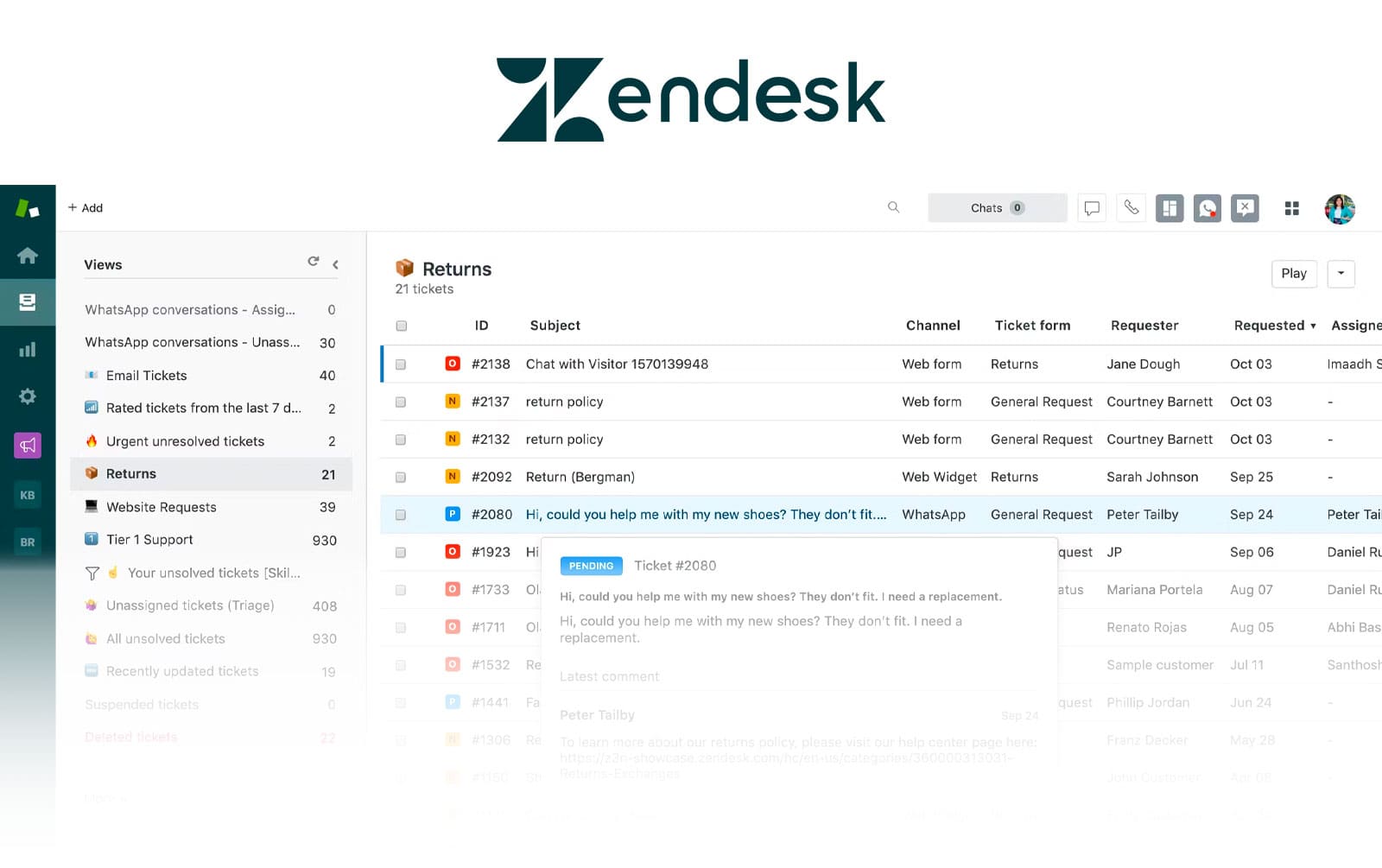
Zendesk for Service is a comprehensive solution tailored to meet the needs of IT Service Management in businesses.
Zendesk Inc. is a software development firm that delivers customer service solutions through a software-as-a-service (SaaS) approach. This platform equips organizations with resources for individual customer interactions, predictive analysis for typical customer questions, data collection, engaging with customers, and gaining valuable insights. It operates globally across different parts of the world, including Europe, Asia Pacific, Latin America, and North America.
What users like from Zendesk
Customers have highlighted several benefits of Zendesk, backed up by reviews from reputable sources such as Gartner. Here are some of the benefits that have been identified.
- Exceptional customization options - The platform's user interface stands out for its outstanding customizability, allowing businesses to tailor it precisely to their needs.
- Extensive range of features - Zendesk has introduced a diverse array of valuable features, including capabilities like multichannel messaging, workflow management via the flow builder, and advanced tools for knowledge management. The Admin Center simplifies the configuration process, making the platform's complexity more manageable.
- Seamless multichannel support - The tool excels in multichannel ticket management by seamlessly integrating with social media, chat applications, and traditional communication channels such as email. This integration ensures that agents can operate efficiently within a unified workspace.
- Comprehensive reporting and analytics - Zendesk Explore offers a comprehensive suite of options for reporting and querying, which greatly aids in informed decision-making and robust performance tracking.
- Expansive app marketplace - Zendesk provides a marketplace with over 1,200 third-party applications and integrations. This marketplace proves to be a valuable resource for organizations seeking to enhance their ITSM capabilities.
What users don’t like from Zendesk
While Zendesk has many strengths and positive attributes, customers have also expressed criticism and reservations about certain platform aspects. Reviews from reputable sources such as Gartner have brought these concerns to light. Here are some of the negative aspects that have been highlighted.
- Limitations in dashboard customization - Full dashboard customization is restricted for users on lower-tier plans, primarily being accessible at the Enterprise levels. This constraint can impede the ability to tailor analytics views to meet specific requirements.
- Integration and compatibility considerations - Although the software seamlessly integrates with third-party applications and its CRM solution, Zendesk Sell, users often require higher-tier plans to harness these capabilities fully.
- Reporting and analytics constraints - While Zendesk's Explore tool offers a variety of reporting options, users on an Enterprise plan may find dashboard customizations significantly limited. This area has room for improvement, especially considering Zendesk's pricing structure.
- Pricing challenges across business sizes - Zendesk's pricing structure can pose difficulties for small to mid-sized businesses. The starting cost of $49 per agent per month and the necessity of higher-cost plans for access to enterprise-level features can be a barrier for some.
What’s Zendesk’s argument over SysAid?
Zendesk presents a compelling argument highlighting its strengths in comparison to SysAid.
- Exceptional customization options - Zendesk takes pride in its exceptional customization options, particularly in user interface customizability. This feature allows businesses to tailor Zendesk to their specific needs and preferences finely.
- Extensive range of features - Zendesk offers a diverse array of valuable features that cater to a wide range of business needs. Notable capabilities include multichannel messaging, workflow management via the flow builder, and advanced tools for Knowledge Management.
- Seamless multichannel support - Zendesk excels in multichannel ticket management by seamlessly integrating with various communication channels, including social media, chat applications, and traditional email. This integration ensures that agents can efficiently handle customer inquiries within a unified workspace.
- Comprehensive reporting and analytics - Zendesk's reporting and analytics capabilities, particularly through Zendesk Explore, offer a comprehensive suite of options for reporting and querying. This robust feature set aids organizations in making informed decisions and effectively tracking performance.
- Expansive app marketplace - Zendesk offers a vast app marketplace with over 1,200 third-party applications and integrations. This extensive marketplace serves as a valuable resource for organizations looking to expand their ITSM capabilities.
Considering InvGate Service Management as an ITSM solution alternative

While SysAid and Zendesk are well-established competitors within the ITSM industry, exploring alternative solutions that can better cater to your organization's specific requirements is essential. In this context, InvGate Service Management emerges as a compelling choice that warrants thorough consideration.
Let's delve into the advantageous attributes of InvGate Service Management that render it a valuable option for fulfilling your organization's ITSM needs.
Outstanding user experience
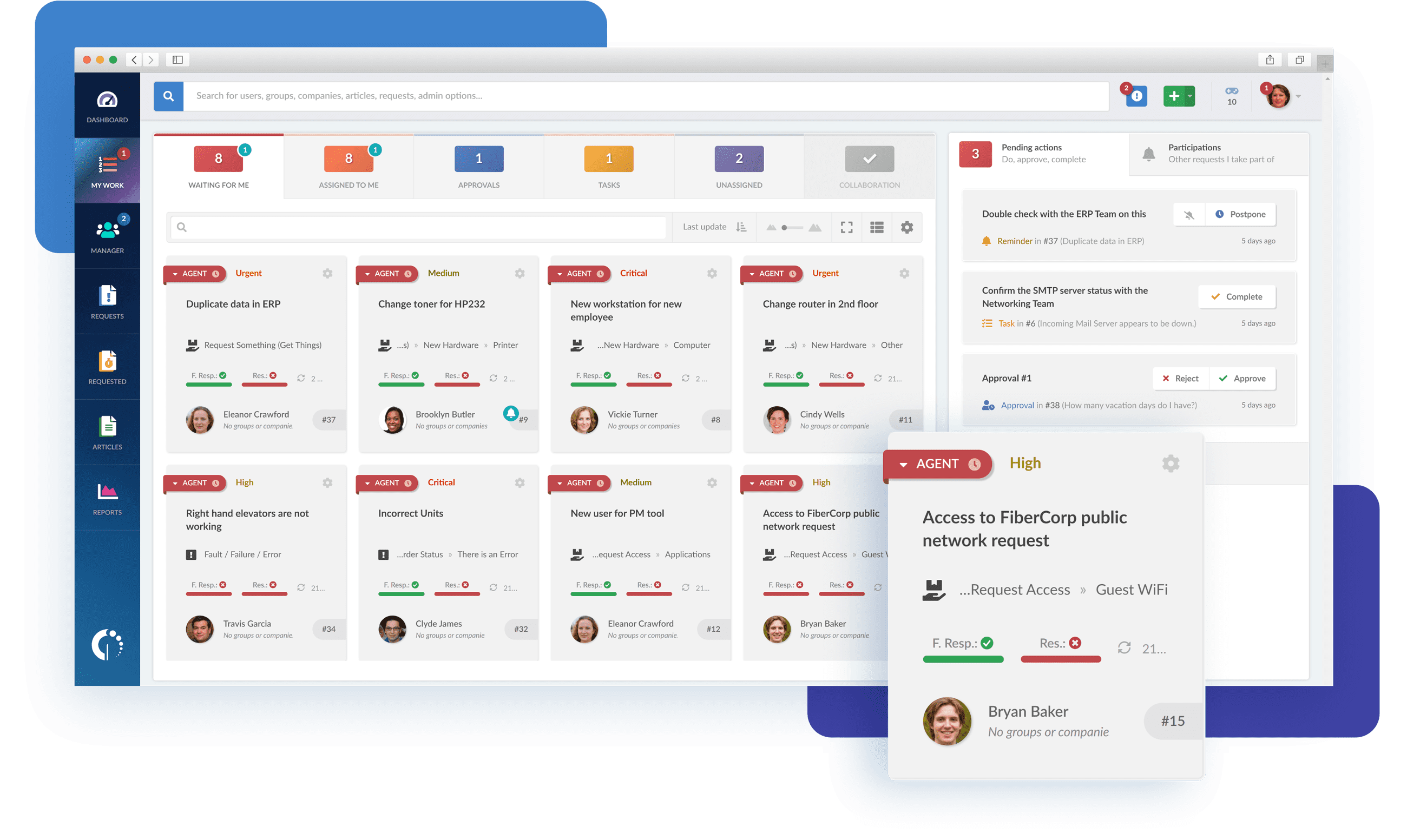
InvGate Service Management prioritizes delivering an exceptional user experience through meticulous design and adherence to UI/UX best practices. Its intuitive interface promotes rapid adoption, reducing the need for extensive training and enabling users to be productive.
Customization and flexibility
InvGate Service Management offers flexible deployment options, enabling organizations to choose between on-premise or cloud-based solutions. This flexibility ensures that the platform can adapt to the specific requirements of various sectors and industries.
Streamlined configuration and setup
InvGate Service Management simplifies the configuration and setup process through a no-code/low-code approach. This approach allows both beginners and experienced users to implement the system without requiring extensive technical expertise. The platform expedites setup by providing straightforward configuration options, enabling organizations to harness its potent ITSM capabilities swiftly.
Purpose-built for ITSM, perfect for ESM
InvGate Service Management is specifically designed for ITSM while seamlessly extending its capabilities to Enterprise Service Management (ESM). It empowers operational departments to enhance their processes and fully embrace the advantages of digital transformation. With a primary focus on ITSM and strong performance in ESM, InvGate Service Management enables streamlined workflows and comprehensive digital transformation initiatives across all departments.
Robust Ticketing and Incident Management
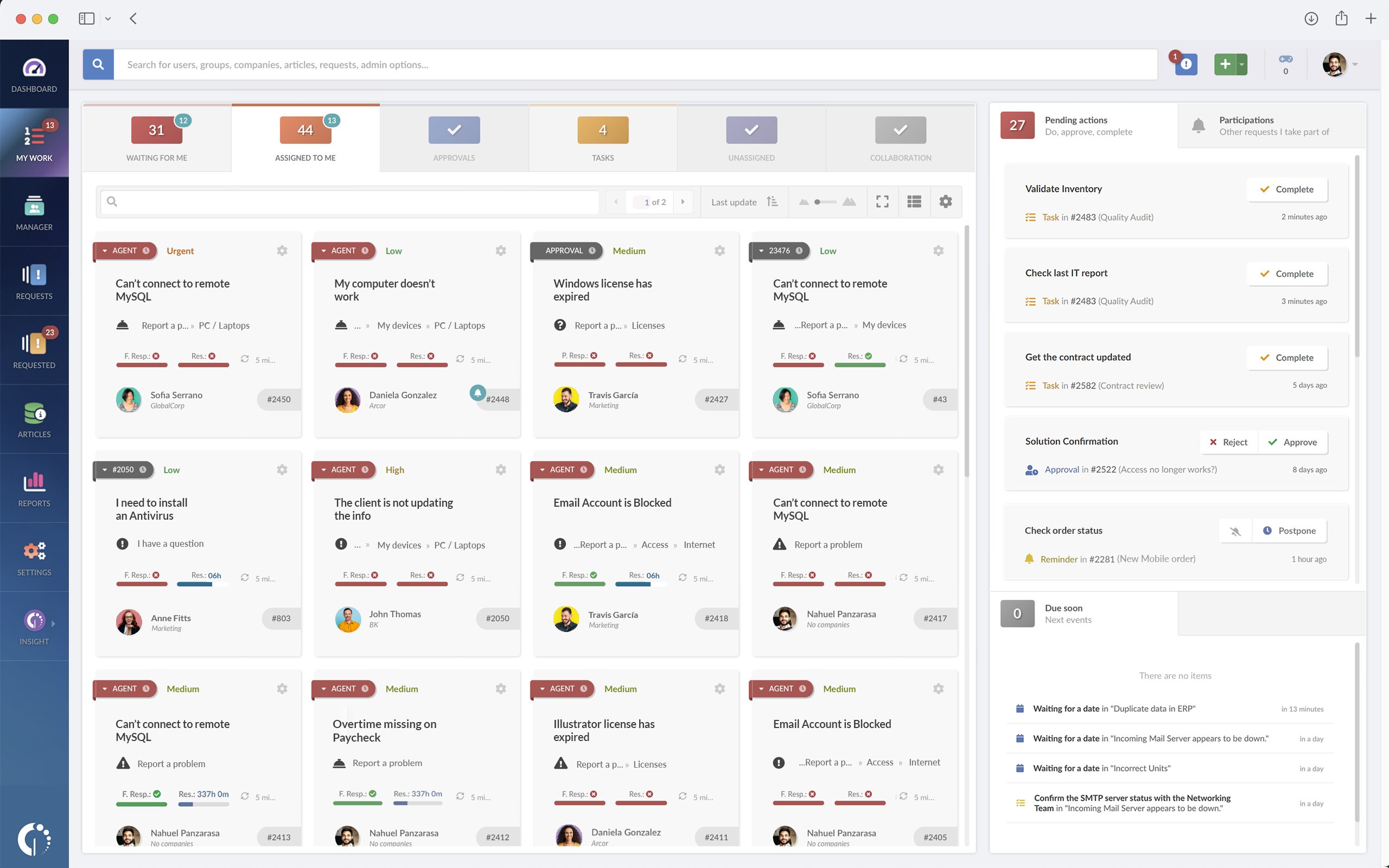
InvGate Service Management excels in providing comprehensive capabilities for managing tickets and incidents. It facilitates efficient tracking, collaboration, and resolution of tickets, empowering IT teams to handle and prioritize incidents effectively. With features like automated ticket routing, customizable workflows, and SLA Management, InvGate Service Management significantly enhances the efficiency of incident resolution processes.
Powerful self-service capabilities
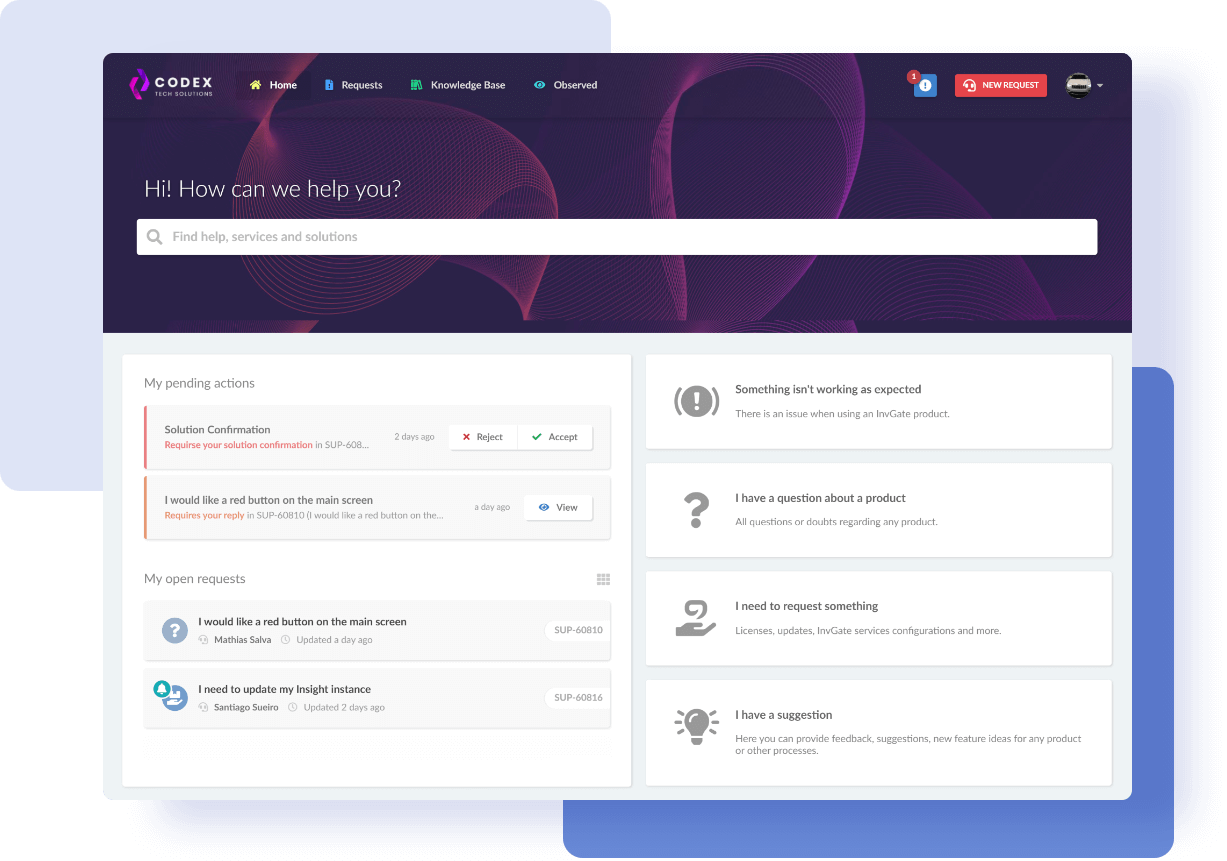
InvGate Service Management incorporates robust self-service functionalities, including a user-friendly portal, an extensive IT service catalog, and a knowledge base. These capabilities empower end-users to independently resolve common issues, access a wide array of IT services, and utilize self-help resources, thus reducing the workload on IT staff.
Extensive reporting and analytics
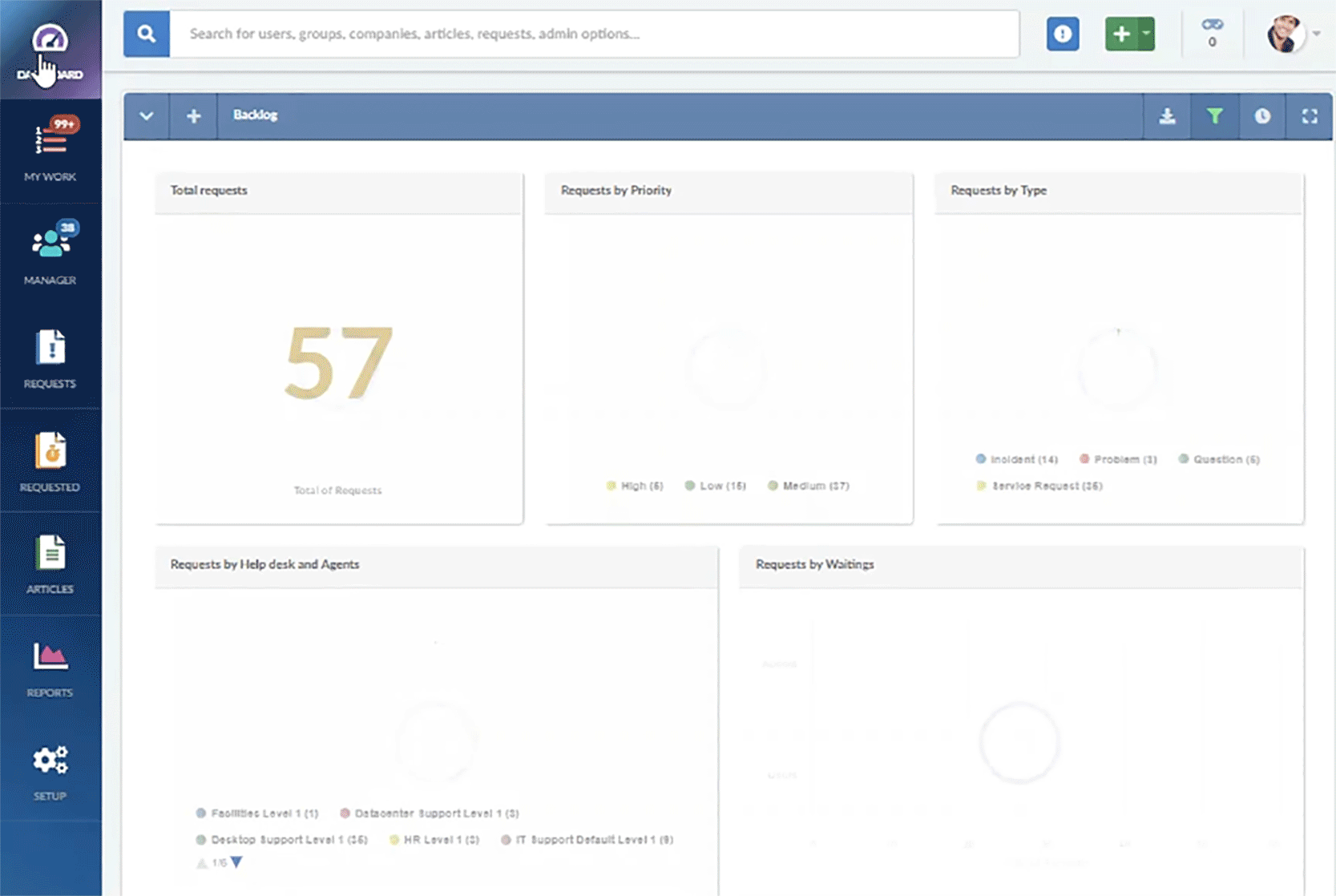
InvGate Service Management offers comprehensive reporting and analytics features, enabling organizations to gain valuable insights into their IT operations and performance. The platform provides ready-made reports and customizable dashboards, enabling IT teams to analyze data, identify patterns, and make informed decisions to enhance their services.
Comprehensive Asset Management
By integrating InvGate Service Management with InvGate Asset Management, organizations gain a holistic view of their IT ecosystem, leading to improved service delivery and reduced downtime. InvGate Asset Management offers a range of features, including IT Asset Discovery, IT Inventory Management, Software License Management, and maintenance schedules.
Cost-effective solution
InvGate Service Management delivers a cost-effective solution without compromising on functionality. It offers a comprehensive range of ITSM features at a competitive price, making it an appealing choice for organizations seeking affordability without sacrificing capabilities. Compared to alternatives like SysAid and Zendesk, InvGate Service Management strikes a balance between cost and functionality.
ITIL-certified readiness
InvGate Service Management has earned the esteemed ITIL4 certification from PINK Elephant, demonstrating its commitment to upholding ITSM excellence. Whether organizations are embarking on their ITIL journey or managing complex operations, InvGate Service Management provides a user-friendly and feature-rich experience aligned with industry best practices.
Fast ROI and ongoing innovation
InvGate Service Management ensures a swift return on investment through efficient implementation processes. Within weeks, organizations can begin reaping the benefits of this robust ITSM solution. Additionally, regular feature updates keep users at the forefront of technology without incurring additional costs.
Next steps
The comparison between Sysaid vs. Zendesk, two ITSM platforms with a host of features and capabilities, highlights the importance of carefully assessing your organization's specific needs and priorities.
If you're seeking an alternative solution that combines robust functionalities with user-friendliness and a commitment to optimizing IT operations, you might want to explore InvGate Service Management. This platform offers a streamlined approach to ITSM, empowering organizations to streamline their processes, drive digital transformation, and ultimately elevate their overall business operations.
To help guide you through your upcoming ITSM implementation, download our free ITSM implementation checklist. It can be an invaluable resource as you embark on your journey to optimize IT operations and deliver top-notch service to your organization and customers.
















